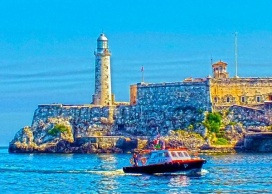
Havana ephemeris. October 1st.
1885. The Hubert de Blanck Conservatory is founded in Havana.

It was the first institution of its type of music and declamation in Cuba. In 1889 it was renamed the National Conservatory of Music. Its first location was in Paseo del Prado with number 100. Over time, the center changed its address on several occasions. It was located at number 3 Calzada de Reina, and later in 1962 it was located in the Calzada building, between A and B, in Vedado, where it is currently located.
Important people have passed through this institution who, over the years, gave prestige to the national culture.
Among others are Ernesto Lecuona, Eduardo Sánchez de Fuentes, Dulce María Serret and Laura Rayneri.
Among the priorities of the Conservatory were always the academic piano, violin and music theory competitions, the first to be held in Cuba.
1935. Ernesto Oviedo is born in Havana.
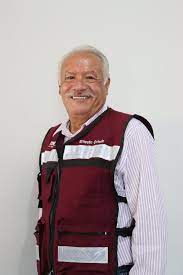
He did his first music studies at the Municipal Conservatory of Havana, today Amadeo Roldán, and concluded them at the Ignacio Cervantes School of Professional Improvement, where he studied piano and double bass. Singer with a ringing voice, he belonged to the group “La Tanda de Guaracheros”. He was the founder of the Hermanos Izquierdo Orchestra. He belonged to the National Folklore Ensemble Orchestra with which he traveled to Africa. He was also in the Richard Egües and his Cuban Stars Orchestra and in the Cuban Stars Orchestra conducted by maestro Félix Reyna.
1942. Héctor Quintero is born in Havana.
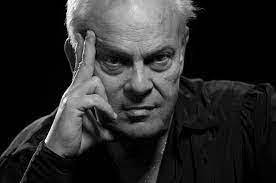
At the age of ten, he performed with great success at the Supreme Court of Children's Art, which was sponsored by the CMQ radio station. In 1962 he presented his first play. From his authorial harvest there are various stagings, among others, The Skinny Prize, with which he won the Grand Prix of the International Theater Institute in 1968. This work was translated into more than a dozen languages and performed in more than 30 cities of various continents. Another very relevant creation of his is "Contigo pan y Cebolla" presented several times in Cuba and in various Latin American countries.
Quintero was part of renowned theater companies in the country, such as Milanés, the National Drama Ensemble, Teatro Estudio and the Musical Theater of Havana. In the latter he served as General Director for twelve years.
He also wrote a telenovela that achieved great popularity in Cuba, the one he titled "El Año Que Viene". He also performed the function of presenter and narrator of important cultural activities.
For his cultural work, he was distinguished with the Alejo Carpentier Medal, awarded by the Council of State to the most relevant figures of national culture, as well as the Replica of the Máximo Gómez Machete awarded by the Ministry of the Revolutionary Armed Forces.
He passed away in Havana on April 6, 2011.
1963. The world's first cosmonaut Valentina Tereshkova arrives in Cuba.
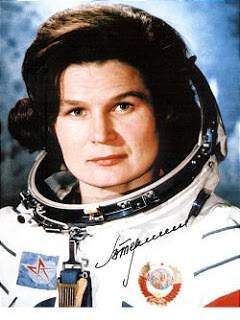
She was received at the "José Martí" International Airport, in Rancho Boyeros, in Havana, by Commander in Chief Fidel Castro, President Osvaldo Dorticós, the President of the Federation of Cuban Women Vilma Espín and other Cuban and foreign officials. A crowd from the capital's people greeted the cosmonaut during her car ride through the streets of the city. Days later she appeared on Cuban television and stated: “It is difficult to find the words to express how the people receive us. A hearty thank you to all of you.”
Valentina Tereshkova made 48 orbits around the Earth in the successful flight of Vostok 6, which lasted from June 16 to 19, 1963.
2009. Cintio Vitier dies in Havana
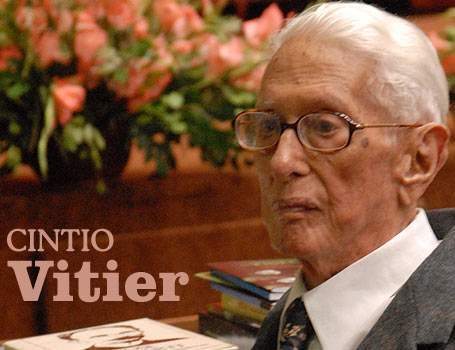
He began his studies at a school in Matanzas founded by his father. In 1935 he moved to Havana and studied at Colegio La Luz. Later he graduated with a bachelor's degree in Sciences and Letters from the Institute of Havana and later a Doctor of Civil Law from the University of Havana in 1947. He began his literary activity when he was 16 years old and his first book of poems was published in 1938. In the 1940s, he was part of the “ORÍGENES” group, which was headed by the prestigious Cuban intellectual José Lezama Lima.
He participated in the founding of the Sala Martí of the National Library and later worked at the Center for Martí Studies. Precisely he was conferred the status of Honorary President of that institution. His poetic work has been cataloged as one of the most complex in Cuban literature of the 20th century.
He worked as the person in charge of the critical edition of the Complete Works of José Martí at the Center for Marti Studies, where he produced, in collaboration with his wife Fina García Marruz and Emilio de Armas, the critical edition of the Complete Poetry of Martí. .
For his work, he achieved various awards: Félix Varela Order of the First Degree, Carlos J. Finlay Order, Distinction for National Culture, Juan Marinello Order and the José Martí Order, among others.
His birth took place in the American city of Key West on September 25, 1921.